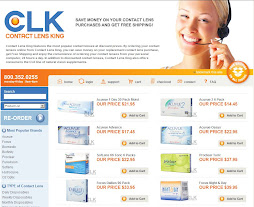Contact lens wearers have always focused on the selection and fitting of their contact lenses. However, with the exception of perhaps selecting a ‘nifty’ color, less attention is paid by many to the lens case in which their contacts will be stored. This is an oversight that could lead to serious eye-health problems.
Currently, a large portion of research in the contact lens field centers on preventing and treating infections that result from contaminated lenses. The condition of contact lens cases must also be considered a factor; especially when a recent study* discovered that nearly one quarter of cases in use are never replaced. This is extremely alarming because when not properly cared for or discarded, these cases become reservoirs for dangerous bacteria that threaten the health of the wearer’s eyes. The implications are more serious when realizing that an increasing number of children are being fitted for contacts. If parents are lax in lens care, it is logical to assume that this behavior will be passed onto their kids.
One very serious condition that can stem from unclean contact lens cases is acanthamoeba keratitis. This is a microbial infection that in its advanced stages leads to ulceration of the cornea and the need for a corneal transplant. Symptoms include irritation, sensitivity to light, tearing, and the feeling that something is in the eye. At times diagnosis is not immediate, as these symptoms mirror other types of eye infections.
Whether it is due to neglect or lack of awareness, the negative trend in lens case care must be reversed. Nearly 80% of complications related to contact use are due to patients not applying proper care techniques. The important thing to remember is that contacts are not just fashionable accessories, but regulated medical devices that require the utmost diligence (and that includes cases) to safeguard your eyes.
Recommended contact lens case replacement is once a month, and during the time a case is kept the following steps should be taken:
· Always wash hands before handling contact lens or the lens case.
· Never use tap water (which may contain bacteria) to clean lens cases. Use a solution and air-dry with the lids open.
· Never ‘top-off’ old solution with new. Use fresh solution each time you store the lenses.
· Do not allow solution bottle tips to touch any surface, including your body, as this leads to contamination.
· Do not use solutions past their expiration date.
Also available are case-holders that keep track of replacement times for both lenses and cases. These are handy for those who do not want to rely on their memory alone.
Consult your eye care professional about contact lens and lens case care, types of solutions that are best suited for your needs, and any changes in care regimen that you plan to make. Be sure to follow all your doctor’s instructions.
* Conducted by WatchDog Group LC, St. Louis, MO.
Subscribe to:
Post Comments (Atom)





1 comment:
Thank you for posting this information about contact lens cases.
I am the inventor of the LensAlert Contact Lens & Case Reminder Timer. I am delighted to see that the word is spreading about the dangers of contact lenses when they are not cared for properly.
Contact lenses and contact lens cases must be replaced on schedule. Most contact lens wearers wear either 14-day or 30-day lenses. It is not OK to wear these lenses past their replacement date. You will jeapordize the long term health of your eyes. And regarding contact lens cases, throw them away every 30 days. They are hotbeds for infection.
You only have one pair of eyes. Contact lenses can be very damaging if not used properly. Do your eyes a favor, and follow the rules.
For great contact lens care tips, please visit our website at www.lensalert.com
Thank you Contact Lens King!
Post a Comment